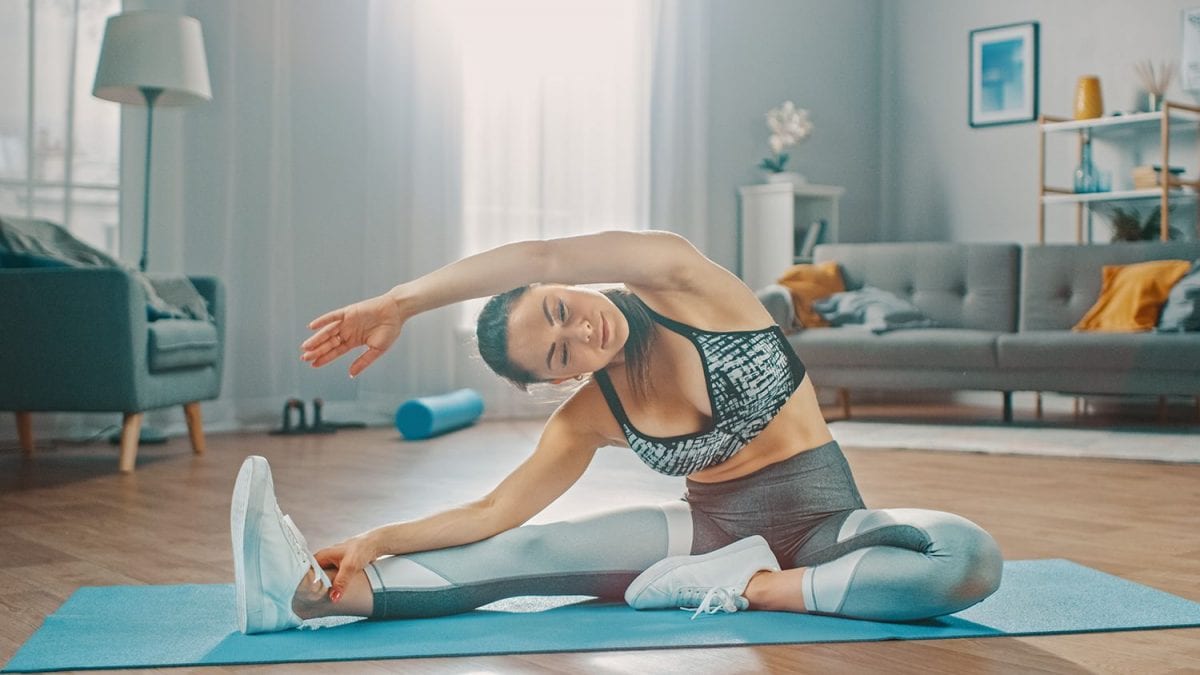The pandemic has shut down many establishments, including gyms and sports venues. If you’ve stashed away your Giro range helmet and other ski gear, resorting to home based workouts as the months pass, you’re not alone. Many people have been using the downtime as an opportunity to get more physically active and shed some of that pandemic-induced weight gain.
Limitations of home exercise
Working out at home can be convenient, but not everyone can afford to convert a storage room into a fully-equipped fitness center. And speaking of equipment, that might be in short supply as well.
In and around the home, your options can feel limited. How many times can you jog around the block before it gets boring and repetitive? There’s only so much you can do in your room, with a small space for movement and little to no dedicated gear.
And what if you need to be in condition for ski season or want to challenge your body? Doing the same bodyweight exercises each day will only make your body acclimatize to the strain. It becomes harder to bulk up or hit the weaker muscle groups.
Lever mechanics
This is where levers come into play. The term might conjure up images of machinery or construction. And that’s a helpful way to understand how levers function in your body.
The classic analogy for a lever mechanism is the seesaw. Two kids of equal weight sitting on opposite ends of a seesaw will balance each other out. Shift one child closer to the fulcrum, and the balance shifts. The child that is further away will effectively exert more force on the beam, despite their equal weight.
Our muscles work in the same way. Consider a forearm extension, which works the triceps. Here, the elbow joint operates like the fulcrum on a seesaw. You hold a weight like a dumbbell in your hand and lower it in a controlled manner.
If you want to make the extension more difficult, the typical approach is to add more weight. But what if that’s not an option? You can increase the distance instead. Try attaching a weight to the end of a stick and slowly lowering that. The longer the stick, the more difficult the extension becomes. This works even if the weight is lighter than your dumbbell.
The seesaw mechanism is an example of a ‘first-class’ lever. In this category, the axis is between the force and the resistance.
Second class levers exist where resistance lies between the axis and the force. An appropriate analogy would be a wheelbarrow. You exert force to tilt the wheelbarrow upwards, resisted by the weight of the wheelbarrow itself. As the point of contact with the ground, the wheels are the axis. Examples in action would be our ankles during tiptoe motion or the full body during a pushup.
Third class levers have the force between the axis and resistance. Striking a baseball with a bat provides a visual analogy. The axis is the grip of your hands. Force comes from the push of your batting arm, resistance from the ball. Most levers in the body fall into this class, such as flexing the elbows or knees.
Applying levers to exercise
In practice, you can make any exercise more difficult by reducing your leverage, or you can make it easier by increasing leverage. The latter is particularly effective when you’d like to ease your way into a difficult exercise without risking injury.
Consider the pushup. It’s a deceptively simple full-body exercise. Many people think they can execute it properly but might have sagging form due to poor core strength. Pushing up from the knees might make it easier, but you’re not engaging all the muscles that a full pushup would require.
If you want to build up the strength for a proper pushup, try pushing up from a stable elevated surface. For instance, a waist-high table puts you at about a 45° angle instead of flat on the floor. You’ll be able to practice proper form, but with lowered difficulty.
As you grow stronger and floor pushups become too easy, leverage can be reduced in many ways. You can vary your hands’ position, staggering them or using only the fingertips of one hand. Or you can place your feet on an elevated surface so that your body is at a negative angle.
When you grasp how levers work, applying them to your home workouts is easy and practical. You’ll have a range of options for safely adjusting the degree of difficulty of various exercises. And none of it requires fancy equipment.








